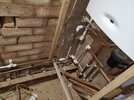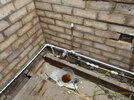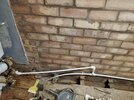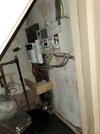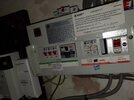- Joined
- 15 Jun 2017
- Messages
- 15
- Reaction score
- 0
- Country

I've been renovating my bathroom and the kitchen below and started replacing some old copper water pipes with plastic. The old lead main and stop cock remain along with the odd bit of copper (i ran out of plastic pipe). The hot water is still all copper although most of the fittings are plastic pushfit.
I also removed a radiator completely.
Anyway I'm abit lost on what to do with all the earth bonding wires that I have. Theres an earth connected to the stopcock that goes up to the bathroom, it used it be connected to the bath and the hot/ cold water pipes before going to the radiator and im not sure where after that.
Edit: so I checked and it carries on from where the radiator was to the consumer unit or somewhere around there.
I also had a cold water pipe coming back down from the bathroom on the other side of the room which had an earth that goes back to the consumer unit. Can that just be removed?
Will add pictures shortly.
Cheers
I also removed a radiator completely.
Anyway I'm abit lost on what to do with all the earth bonding wires that I have. Theres an earth connected to the stopcock that goes up to the bathroom, it used it be connected to the bath and the hot/ cold water pipes before going to the radiator and im not sure where after that.
Edit: so I checked and it carries on from where the radiator was to the consumer unit or somewhere around there.
I also had a cold water pipe coming back down from the bathroom on the other side of the room which had an earth that goes back to the consumer unit. Can that just be removed?
Will add pictures shortly.
Cheers
Attachments
Last edited:


